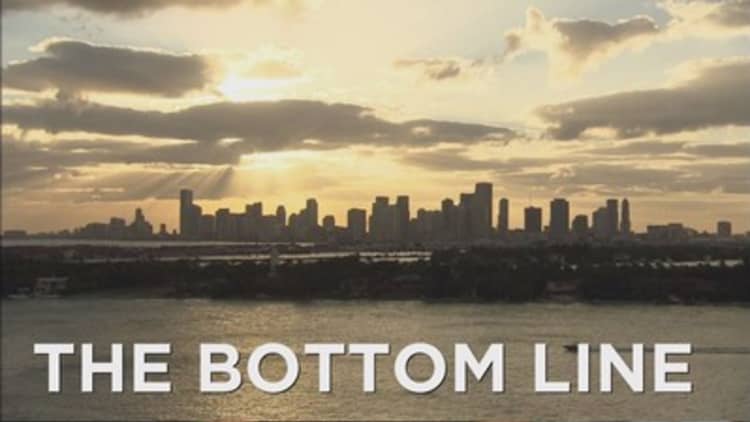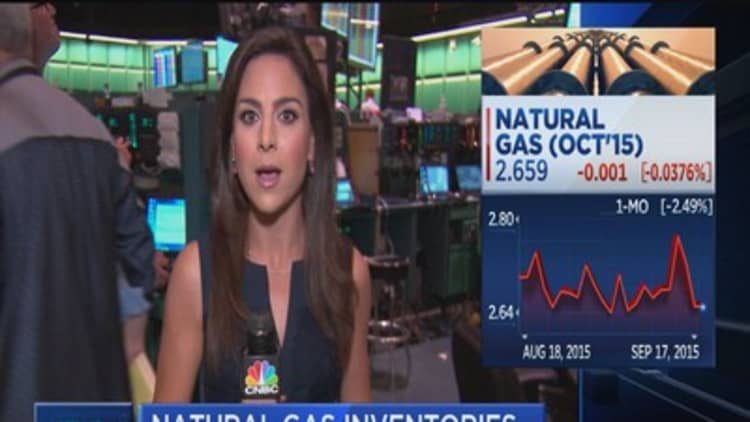


U.S. crude ended the session lower after the Federal Reserve announced it would not raise interest rates, citing the need for further improvement in the labor market and evidence that inflation will rise toward the central bank's target.
Higher U.S. interest rates typically boost the U.S. currency, making dollar-denominated oil more expensive for importers holding other currencies. The dollar eased 0.3 percent ahead of the announcement, and was last down 0.8 percent.
The Fed has held interest rates near zero since December, 2008. It last raised its benchmark fed funds rate on June 29, 2006.
Read MoreFed leaves rates unchanged
U.S. light crude oil settled down 25 cents at $46.90 a barrel, little changed from its price prior to the Fed's announcement. It traded between $46.33 to $47.71.
North Sea Brent crude oil was down 50 cents at $49.25 a barrel shortly by 3:09 p.m. EDT, having traded as high as $50.14.
John Kilduff, founding partner at Again Capital, told CNBC the Fed's decision is a net positive for crude prices. "This argues for a weak dollar in the short term. That dollar weakness lends some strength to prices here temporarily."
The question, he said, is how much ground the dollar gives up and how much that supports crude prices.
OPEC forecasts oil prices will grow by no more than $5 per barrel a year to reach $80 by 2020, with rival non-OPEC production growth slowing but not fast enough to fully clear the current oil glut, according to OPEC sources.
The report forecasts that non-OPEC supply would amount to 58.2 million barrels per day by 2017, some 1 million barrels per day lower than in the previous forecast.
Even if markets begin to rebalance as low oil prices are hurting high-cost non-OPEC producers, prices are unlikely to return above $100 per barrel until 2030-2040, according to one of the sources.
Read MoreThis is the path to $60 oil: Strategist
Oil futures felt pressure on Thursday after weak Japanese data revived fears over the prospects for global growth.
Japan's exports slowed a second straight month in August, a sign that China's economic slowdown could be damaging the world's third-biggest economy.The Japanese figures follow worrying data from other Asian economies, including South Korea and Taiwan, creating anxiety over possible effects of slower growth in China.
Brent's premium to U.S crude, comparing November contracts, fell to below $2 a barrel.
Rising gasoline stocks and gas oil inventories at an all-time high at the Amsterdam-Rotterdam-Antwerp hub were another bearish factor on Thursday.
Supportive U.S. jobless claims data on Thursday offset some of the gloom about Asia, briefly turning oil higher.
The number of Americans filing new applications for unemployment benefits fell last week to the lowest level in eight weeks, suggesting the U.S. labor market was strong despite a tightening in financial market conditions.
Read MoreAustralia delays decision on Shell-BG deal
U.S. crude stocks fell last week, both industry and government data released this week showed, lending support to oil futures.
U.S. oil output has begun to ease after six years of sharp increases. Energy Information Administration data shows U.S. crude and condensate production peaked at 9.612 million barrels per day in April and had declined by 316,000 bpd by June.
—CNBC's Tom DiChristopher contributed to this report.


